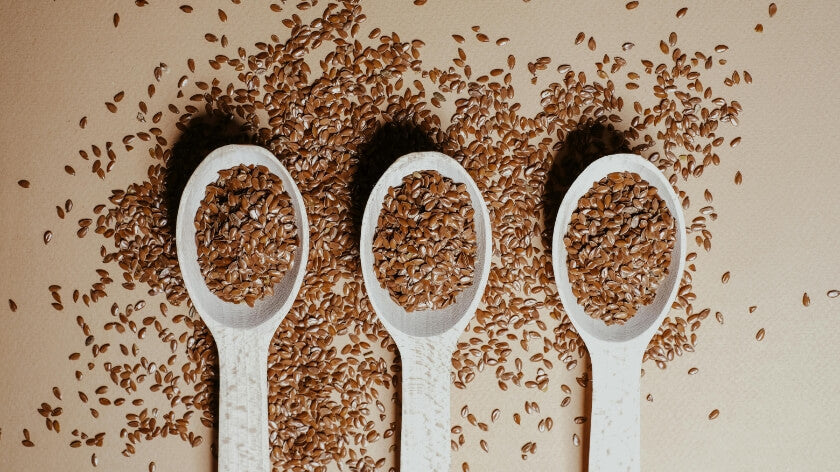If you experience bloating, fatigue, skin problems, or headaches after consuming yeast-containing products, you may have a yeast intolerance. Recognising these symptoms and identifying foods with yeast can help you manage your diet and alleviate these adverse reactions.
Can bread, beer, or even a handful of grapes trigger unpleasant symptoms for you? This might mean you have a yeast intolerance or allergy. While not as common as sensitivities to things like dairy, yeast reactions can cause uncomfortable digestive issues, rashes, or even breathing trouble. In this article, we’ll help you understand the signs and how to find out if yeast is causing you problems.
What are the symptoms of yeast allergy?
Yeast allergy symptoms can be similar to that of a cold or be experienced in and around the stomach and digestive system. They include:
- Coughing and sneezing
- Runny nose
- Itchy eyes
- Breathing difficulties
- Nausea
- Vomiting
- Stomach cramps
- Lightheadedness
If you experience a severe reaction it can also lead to anaphylaxis, though this is rare.
What are the symptoms of yeast intolerance?
Yeast intolerance symptoms range from mild to severe, though are usually less extreme than if you were to have an allergy. You’re also unlikely to experience symptoms if you inhale yeast spores, intolerance symptoms are brought on by ingesting yeast.. Symptoms include:
- Bloating
- Headaches
- Diarrhoea
- Constipation
- Joint pain
- Lethargy
If you have a yeast allergy that goes undiagnosed, your symptoms can worsen over time, which can lead to sinusitis, itching, or skin conditions. So, if you suspect you have a yeast allergy or intolerance, it’s important to get it confirmed as soon as possible.
What is a food intolerance?
A food intolerance occurs when your body can’t metabolise or process a specific type of food. This leads to symptoms in and around your stomach as it struggles to digest it. This is different from an allergy, which is your body mistaking food as a threat, then your immune system attempts to fight it, which is what leads to the symptoms. Both an allergy and an intolerance can develop at any stage in your life, even if you’ve never experienced symptoms before.
What is yeast?
Yeast is a single-celled microorganism and a member of the fungi family. It’s found in many plants and animals – including ourselves – and consumes sugar. It produces alcohol, carbon dioxide and more.
In food, there are two types of yeast: baker’s yeast, used in baking and brewer’s yeast, used to brew beer and other alcoholic drinks. If you have a yeast allergy or intolerance you likely have an allergy to both. You may also experience symptoms when exposed to other types of fungi, such as mushrooms and mould.
If you have a yeast intolerance, you may also experience sensitivities to other types of fungi, such as mold and mushrooms. Be aware of potential reactions and consider further testing if you notice additional symptoms.
How common is a yeast intolerance?
Thankfully, a yeast intolerance or allergy isn’t particularly common, with less than 2% of adults experiencing symptoms after eating or being exposed to yeast and other fungi.
Because fungi easily become airborne it can be a challenging allergy to manage, but with confirmation, you can take steps to ensure you avoid exposure.
How do you test for a yeast allergy or intolerance?
If you think you might have a yeast allergy or intolerance, there are four key ways you can find out:
- An elimination diet, which is done by removing yeast from your diet to see if the symptoms stop.
- Keep a food diary, which involves you making a note of what you eat and when, and comparing it to whenever you experience symptoms.
- Speak to your healthcare provider to discuss your symptoms and what they can do for you.
- Take a food sensitivity test or food allergy test at home and find out in just five days whether you have a yeast intolerance.
What should you do if you think you have a yeast allergy or intolerance?
Because a yeast allergy can sometimes become severe, if you suspect you have one you should stop eating food that contains yeast straight away and investigate further. Whilst the symptoms of an intolerance may not be as serious as an allergy, there is a crossover of the symptoms, therefore it’s best to get confirmation before adding yeast back into your diet.
What foods should you avoid if you have a yeast allergy or intolerance?
If you have a yeast allergy or intolerance, you should remove any food that contains yeast from your diet. This includes:
- Bread
- Cakes
- Biscuits
- Cookies
- Milk
- Pastries
- Flour
- Beer
- Wine
- Cereal
- Sweets/candy
- Berries
- Grapes
- Mushrooms
- Aged cheese
- Read labels carefully: Yeast can be hidden in unexpected foods, including sauces, condiments, processed meats, and some vinegars. Check the ingredients list for words like “yeast,” “baker’s yeast,” “brewer’s yeast,” and “yeast extract.”
- Be mindful of fermented foods: Fermented products like soy sauce, sauerkraut, and some pickles often contain yeast.
- Choose fresh over processed: Opt for fresh fruits, vegetables, and meats rather than overly processed items when possible.
- Plan ahead: When dining out, call ahead to inquire about yeast content in their dishes. Pack your own snacks for peace of mind.
Yeast in Unexpected Places
Yeast isn’t just for baking bread! It’s a sneaky ingredient that can hide in surprising places. Did you know that some of your favourite condiments, like soy sauce and certain kinds of vinegar, are made using yeast? Even processed meats and prepackaged snacks sometimes contain hidden yeast. Understanding where yeast lurks is key for anyone with a sensitivity, making careful label reading and advanced planning essential for a yeast-free lifestyle.
Food alternatives to help avoid yeast
Managing a yeast allergy and intolerance can be simple to do at home, but it can make eating out a little more difficult. There are yeast-free versions of bread and cakes available, but restaurants rarely offer these to diners. Foods you can eat if you have a yeast allergy or intolerance include:
- Vegetables
- Sugar low in fruit
- Eggs
- Chicken (non-breaded)
- Fish
- Beef
- Shellfish
Don’t let a yeast sensitivity limit your culinary adventures! A world of delicious and nourishing yeast-free food awaits you. Here’s how to get started:
-
Fresh is Best: Let vibrant fruits and vegetables become your staples. Enjoy a wide variety, but in the beginning, be mindful of high-sugar fruits. Pair them with unprocessed meats, poultry, fish, and eggs for satisfying protein.
-
Grocery Store Savvy: Explore the ever-expanding gluten-free aisles. Many of these breads, crackers, baking mixes, and snacks are also yeast-free. Double-check those labels carefully, and don’t be afraid to experiment with new ingredients!
-
Swap It Out: Many common yeast-containing foods have delicious substitutes:
- Bread: Try rice cakes, corn tortillas, or lettuce wraps as creative bases for sandwiches.
- Brewed Beverages: Swap beer and wine for sparkling water infused with fresh fruit, herbal teas, or naturally flavoured seltzers.
- Condiments: Seek out yeast-free soy sauce alternatives like tamari or coconut aminos, and experiment with making your own dressings and sauces.
-
Recipe Inspiration: Dive into the exciting world of yeast-free cooking! There’s an abundance of online resources:
- Dedicated Blogs: Find websites and blogs specialising in yeast-sensitive recipes, offering endless meal ideas and baking inspiration.
- Dietary Communities: Connect with online groups and forums for people managing yeast sensitivities. Share recipes, get support, and discover new tips.
-
Get Creative in the Kitchen: Don’t be afraid to modify your favourite recipes! Baking powder can often substitute for yeast in breads and other baked goods. Experiment with flavorful herbs, spices, and homemade marinades to add a new dimension to your yeast-free dishes.
Remember: A yeast sensitivity doesn’t have to limit your enjoyment of food. Embrace these alternatives and unlock new culinary possibilities with fresh ingredients, exciting recipes, and support from a growing community of yeast-free food enthusiasts.
Test to see if you have a yeast intolerance
If you experience symptoms after eating food that contains yeast, you may very well have an intolerance or allergy. To get confirmation and take control of your health, our food sensitivity tests can tell you if you have an intolerance in just five days.
References
1. Vitamin D. NIH, Office of Dietary Supplements. URL. Accessed February 15, 2021.
2. Nair R, Maseeh A. Vitamin D: The “sunshine” vitamin. J Pharmacol Pharmacother. 2012;3(2):118-126.
3. Vitamin D2 vs. D3: Which Should I Take for Bone Health?. Cleveland Clinic. URL. Accessed February 15, 2021.
4. Jetty V, Glueck CJ, Wang P, et al. Safety of 50,000-100,000 Units of Vitamin D3/Week in Vitamin D-Deficient, Hypercholesterolemic Patients with Reversible Statin Intolerance. N Am J Med Sci. 2016;8(3):156-162.
5. On call: Vitamin D2 or D3? Harvard Medical School. URL. Accessed February 15, 2021






